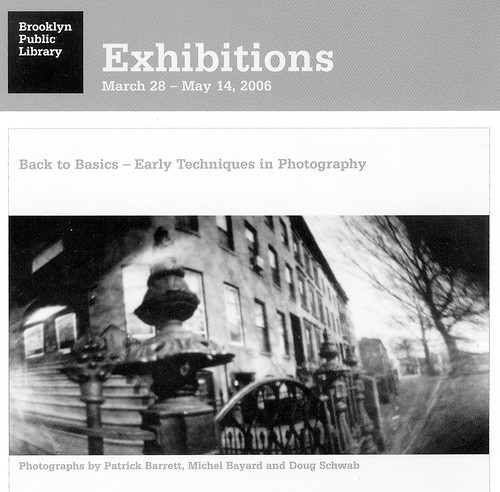f295 founder Tom Persinger writes:
If you’re looking for an event to participate in for Worldwide Pinhole Photography Day, may I suggest f295’s “Simultaneous Pinhole Project” at 7pm GMT 30 April 2006.
As part of Worldwide Pinhole Photography Day, f295 is sponsoring “The Simultaneous Pinhole Project”. A project in which participating members of f295 will make an image at roughly the same moment across the world. Participants will use their pinhole cameras to capture the outside world at GMT 7:00pm. Local times to be adjusted accordingly (eg: GMT 7pm would be 2pm EST, 10am Alaska, 5am Sydney, etc.)
Event URL:
http://www.pinholeday.org/events/index.php?event=1140
Time Zone Map: http://www3.shastacollege.edu/dscollon/images/time_zone_map.JPG
Your pinhole images should contain part of the outside world. If it’s dark in your corner of the globe at the appointed time, feel free to photographlooking out a window with a light/still life in the foreground. The idea is to see the different parts of the world outside at the same moment.
When images are uploaded to the pinholeday.org website please remember to include them in the f295 group. This is a new sorting feature and will allow users to view the series in it’s entirety at the same time.
